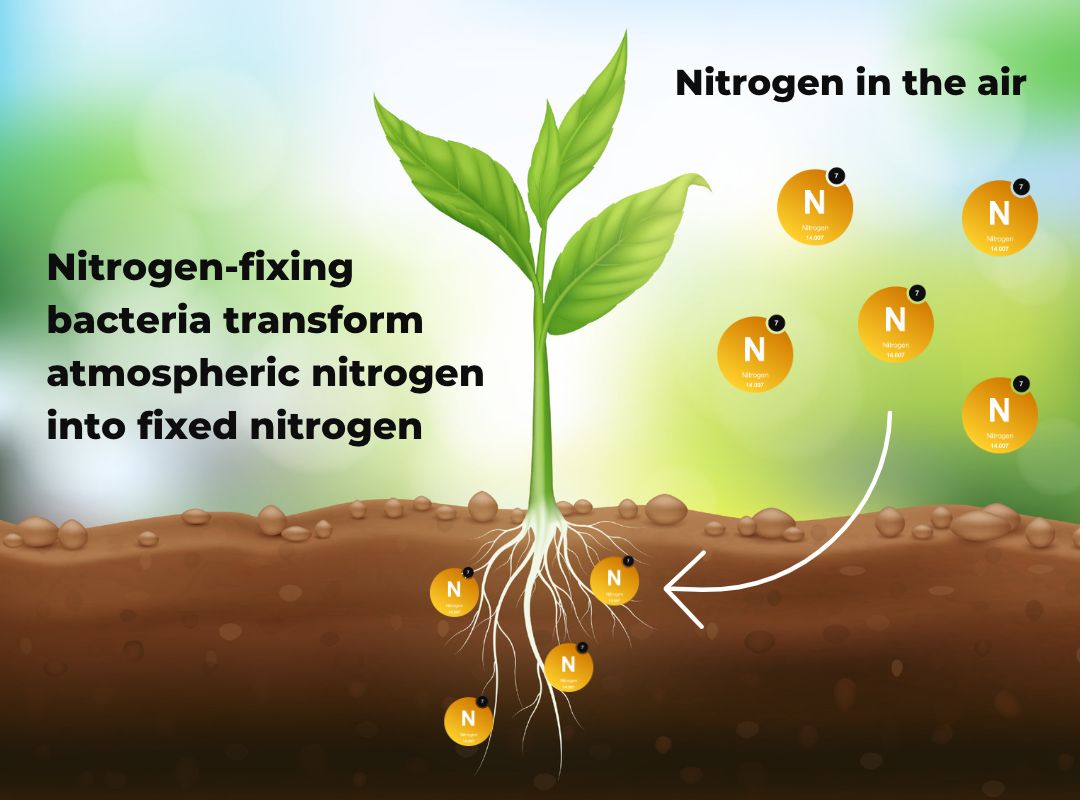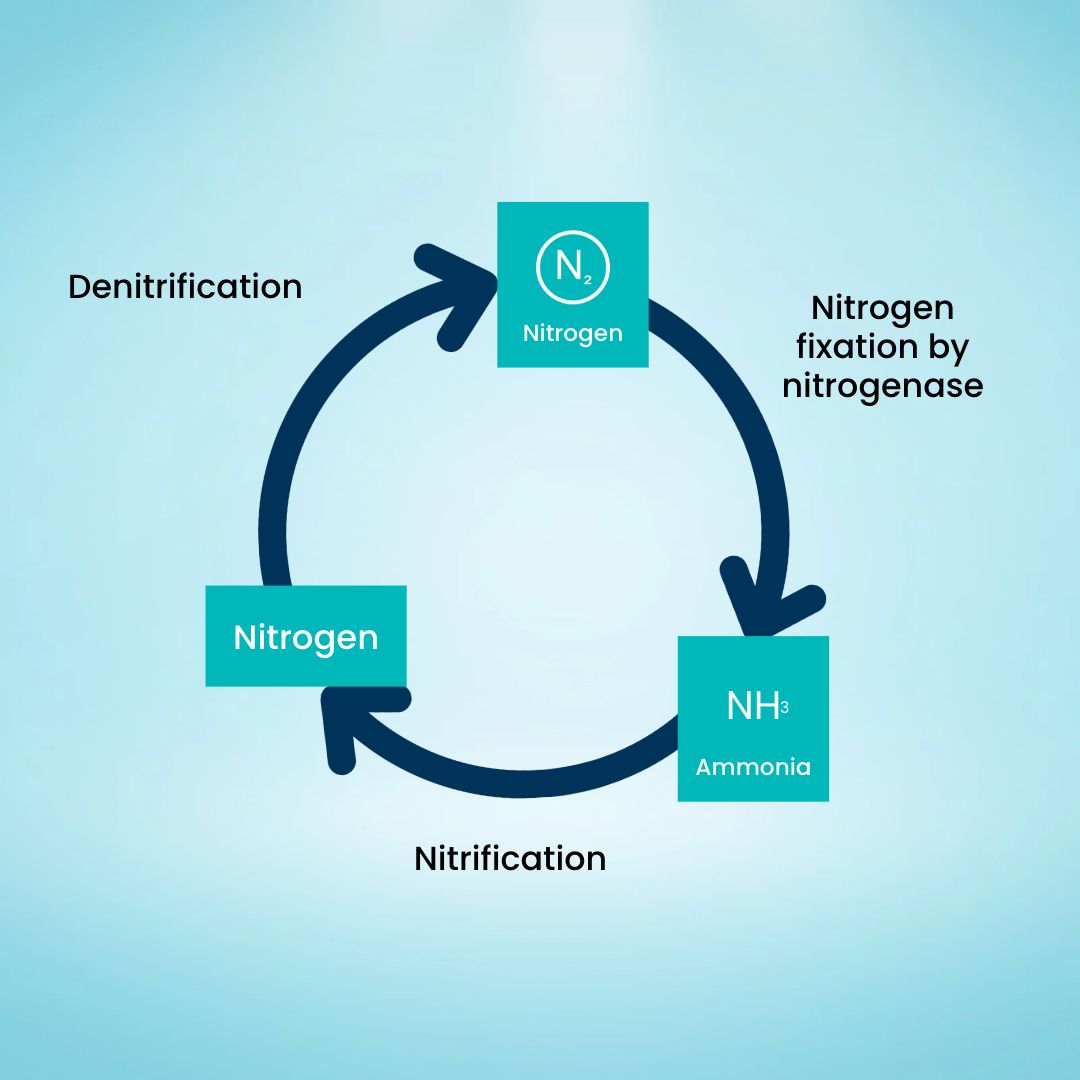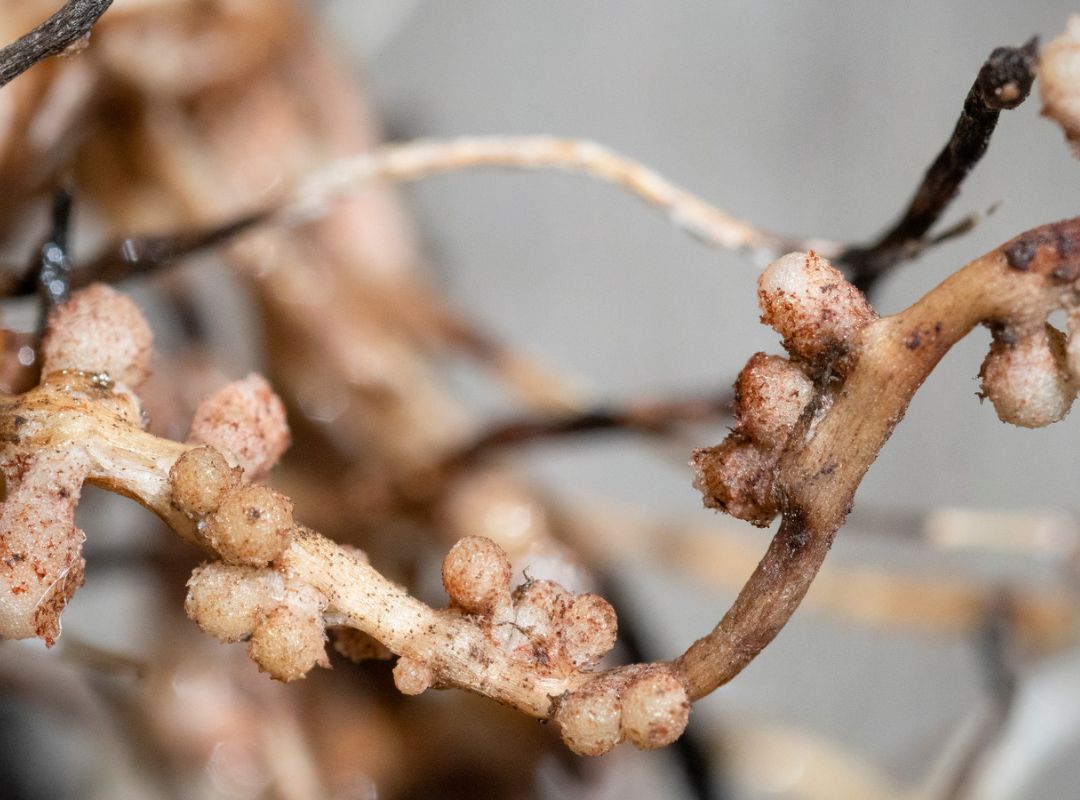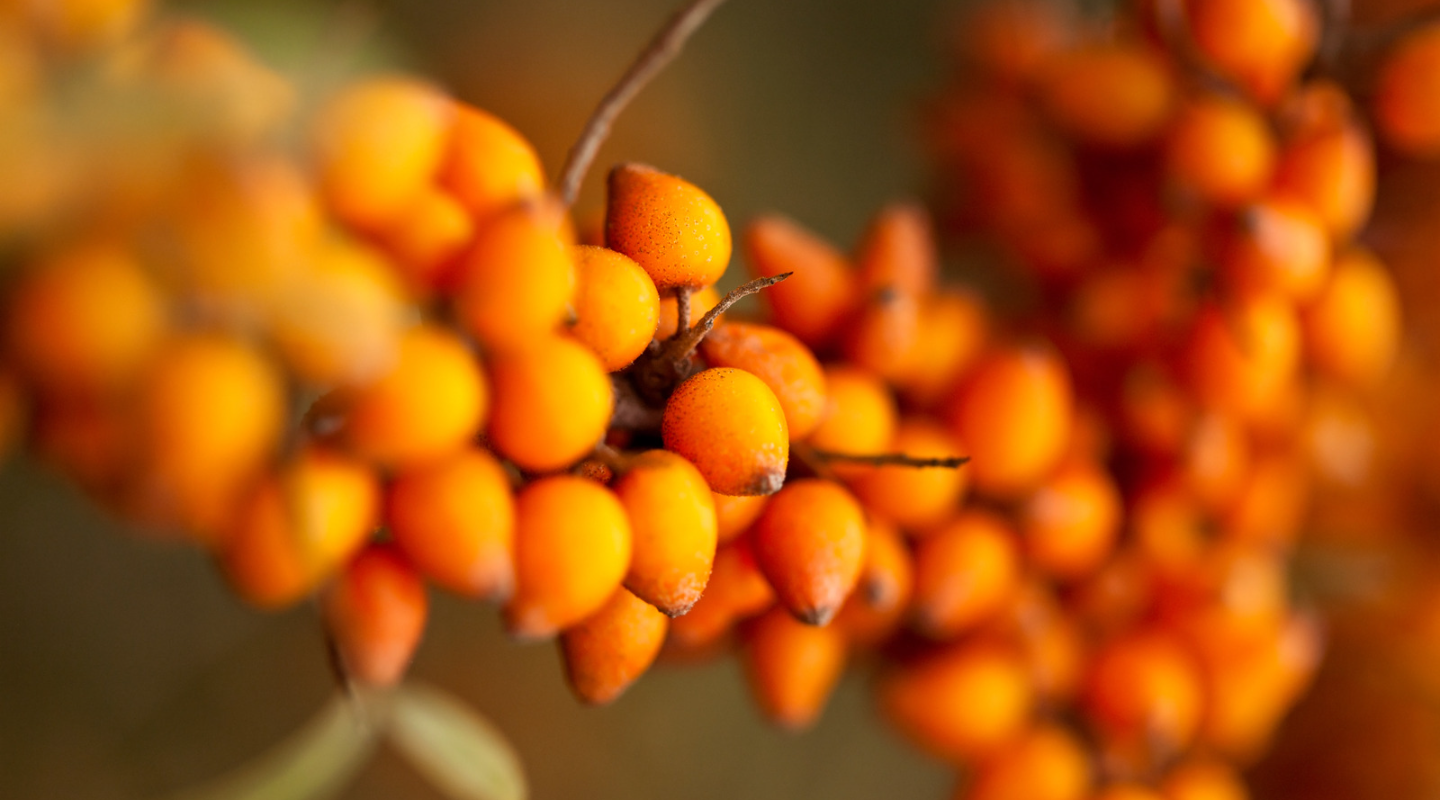The importance of nitrogen for plants
Nitrogen (N) is a primary nutrient that is essential for building strong plants with vigorous, healthy growth. Plants need a lot of N. The challenge is that nitrogen isn’t easily or widely available to plants. That’s because it largely exists in the atmosphere, and most plants can’t access it there. The good news is that you can create your own nitrogen fertiliser by growing nitrogen-fixing plants, such as the sea buckthorn, certain legumes and clover.
Nitrogen-fixing plants take nitrogen from the air and convert it into a form that is useable by plant roots in the soil. Certain soil bacteria form nodules on the plant’s roots that “fix” the nitrogen in the soil. The plant uses some of it, then makes the excess nitrogen available to nearby plants. Science!
Microscopic observations showed that sea buckthorn root nodules have a standard morphology characteristic of Frankia-actinorhizal root nodules which assist in the production of the greatly needed nitrogen.


Nitrogen-Fixing Bacteria
As the name suggests, nitrogen-fixing bacteria participate in the process of this nutrient fixation. Nitrogen-fixing bacteria examples comprise Rhizobium (formerly Agrobacterium), Frankia, Azospirillum, Azoarcus, Herbaspirillum, Cyanobacteria, Rhodobacter, Klebsiella, etc.
The N-fixing bacteria synthesize
the unique nitrogenase enzyme responsible for N fixation.
Still here?
Let’s dig a little deeper and explain more.
Nitrogen-fixing Bacteria Help Crops to Grow
N-fixing bacteria provide crops with ready-to-use N that they need as part
of chlorophyll molecules. Chlorophyll is critical for photosynthesis – transforming the energy of sunlight into chemical energy. Basically, plants need it to get food. Also, they require N as part of amino acids to build proteins that participate in metabolism and energy storage. A lack of N fixation leads to food deficiency, which results in vegetation yellowing, thinning, withering, overall growth delay, and decay as can be seen in the image below.

Symbiotic Nitrogen Fixation
Symbiotic N-fixing bacteria habituate on the host’s roots, forming nodules, accumulating atmospheric N2 in them, and turning it into ammonia nitrogen (NH3). The host uses it for growth and releases it into the soil from the broken nodules after it dies. N fixation symbionts don’t do the ‘favor’ for nothing, though. Since any symbiosis suggests a win-win situation, the bacteria feed on plant-produced carbohydrates (sugars) and take carbon.
So, even though technically, their N fixation symbiosis is defined as infection, both of the parties benefit from it pretty well. For this reason, such a relationship is also called mutualism. More common symbiotic N-fixing bacteria are Rhizobium and Frankia. Frankia is found around the sea buckthorn roots, but more details about this later.
The Importance of Nitrogen Fixing Bacteria for Plans
The role of nitrogen-fixing bacteria is to supply plants with the vital nutrient that they cannot obtain from the air themselves. Nitrogen-fixing microorganisms do what crops can’t – get assimilative N for them. These specific bacteria take it from the air as a gas and release it to the soil, primarily as ammonia. It is the only suitable option for most plants because they can consume N only from the soil and only as nitrogenous inorganic compounds, which explains the importance of nitrogen fixation.

Benefits of Biological Nitrogen Fixation
Intensive agriculture heavily exploits synthetic fertilisation for N fixation, harmful to the environment. Contrary, biological N-fixation proves to be friendly both to farmers and nature. It is efficiently implemented through N-fixing crop species and certain microbial balances, contributing to organic farming. Thus, a low-maintenance nitrogen-fixing cover crop is a significant source of N itself, not to mention the other advantages. As for non-legumes, N-fixing bacteria inoculants are an efficient solution because as they die, the accumulated N in their biomass is released into the soil. This way, they boost soil fertility naturally, allowing farmers to save on synthetic fertilisers, allowing them to get the job done more easily without artificial means. Furthermore, microorganisms’ efficiency goes far beyond N fixation since they improve soil conditions, tackling heavy metals in particular.

Using Sea Buckthorn as a nitrogen-fixer and soil enhancer
Some annual crops such as certain beans, peas, and clover can be used as nitrogen-fixing crops. The sea buckthorn (Hippophae rhamnoides L.) is a woody perennial that belongs to the family Elaeagnaceae which is also very good at fixing nitrogen and enhancing soils. Its common names include Seaberry, Sandthorn, Sallowthorn, and Siberian Pineapple.
It is truly a permaculture plant that can also be used to restore degraded sites, prevent soil erosion, produce healthy edible fruit, be used as a windbreak, and can be a habitat for many different birds and animals. It is a hardy plant that can withstand droughts and is also salt and wind tolerant making it ideal for coastal and desert climates. It can live and produce fruit for more than 50 years. The dynamic sea buckthorn is being used more in new food-forest, horticulture, and regenerative-agriculture projects.


Plantations and findings around the world
In a study in northwest China, sea buckthorn shrubs were planted on the bottoms of dry river beds to increase the water retention of the soil and decrease sediment loss. Because of the soil rehabilitation due to moisture and nitrogen-fixing capabilities, vegetation levels increased in the areas where sea buckthorn was planted.
The fibrous and suckering roots bind sand and add nitrogen, so it has been used extensively in China for reforestation and in the Netherlands for dune restoration.
TERRAGRN in South Africa is transforming degraded and unutiliSed lands into sustainable, biodiverse and carbon-sequestering agro-forests. They are utilising sea buckthorn plants as part of an intercrop project to rehabilitate, improve and optimise barren land to improve food security, stimulate the regional economy with job and skills creation, and to fight global warming by limiting/capturing greenhouse gas emissions. Sea buckthorn is also being planted in large plantations in the colder, desert areas of India.
Sea Buckthorn global berry production rankings (exports):
1) Canada
2) Thailand
3) Poland
4) Peru
5) Malaysia
6) Chile
7) USA
8) Netherlands
The increasing application of leaves, flower, and fruits of sea buckthorn plant is predicted to drive the global market of sea buckthorn. This global sea buckthorn market is driven by key applications such as dietary supplements, cosmetics, food/beverage, pharmaceuticals, animal feed and infrastructure.
Plant material
Berries For Africa can assist with plant material of various berry types including seaberry that are grown and supplied in 3L size pots or hardened off seedlings (plugs).
Contact us for more information on how to order. email: info@berriesforafrica.co.za




